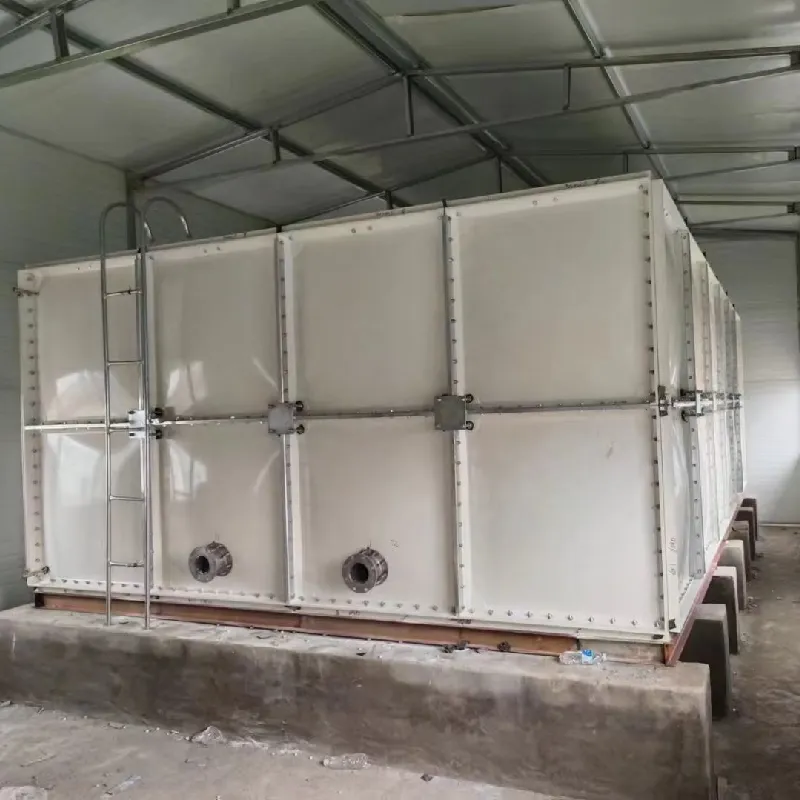loading...
- No. 9, Xingyuan South Street, Dongwaihuan Road, Zaoqiang County, Hengshui, Hebei, China
- admin@zjcomposites.com
- +86 15097380338
- Welcome to visit our website!
frp u channel
Understanding FRP U Channels A Versatile Solution in Modern Construction
In the realm of modern construction and engineering materials, FRP (Fiber Reinforced Polymer) has emerged as a game-changing component. Among its various structural forms, the FRP U channel stands out for its versatility and strength. This article explores the characteristics, benefits, and applications of FRP U channels, highlighting their significance in contemporary construction projects.
What is FRP?
FRP is a composite material made from a polymer matrix reinforced with fibers, typically glass, carbon, or aramid. The incorporation of these fibers significantly enhances the material's tensile strength, durability, and resistance to various environmental factors. The result is a lightweight yet robust structure that can outperform traditional materials like steel and concrete in various applications.
Characteristics of FRP U Channels
The U channel profile, characterized by its U-shaped cross-section, offers several advantages when made from FRP. One of the primary characteristics of FRP U channels is their excellent strength-to-weight ratio. This quality makes them easy to handle and install, reducing labor costs and improving logistical efficiency during construction projects. Moreover, FRP U channels are non-corrosive, which means they maintain their integrity in harsh environments, including coastal areas with high salt exposure or regions with frequent chemical spills. Additionally, they are resistant to UV radiation, further extending their service life.
Another noteworthy aspect of FRP U channels is their dimensional stability. Unlike conventional materials, FRP does not undergo significant thermal expansion or contraction, which stabilizes the structural integrity over varying temperatures. This property makes FRP U channels particularly useful in applications where temperature fluctuations are common.
Benefits of Using FRP U Channels
1. Lightweight Construction The low weight of FRP U channels translates to savings on transportation costs and simplifies the installation process. This feature is especially beneficial for projects requiring extensive scaffolding or heavy lifting equipment.
frp u channel

2. Corrosion Resistance One of the significant advantages of using FRP materials is their ability to resist corrosive elements. This property is particularly critical for structures exposed to chemicals, moisture, and salt, making FRP U channels ideal for industries like marine, chemical processing, and wastewater management.
3. Sustainability The growing focus on sustainable construction practices makes FRP an attractive option. FRP materials can be manufactured with recycled components and are themselves recyclable at the end of their lifecycle.
4. Maintenance-Free FRP U channels require minimal maintenance compared to traditional metal counterparts, which often need regular inspections and treatments to prevent rust and degradation.
Applications of FRP U Channels
FRP U channels find extensive application across various sectors. In construction, they are commonly used as support beams, brackets, and frameworks. Their resilience makes them ideal for bridges, retaining walls, and marine structures. Furthermore, the electrical insulating properties of FRP U channels make them suitable for electrical panels and components within power plants.
In the transportation sector, FRP U channels are utilized in the manufacture of lightweight vehicles and railway sleepers, contributing to improved fuel efficiency and lightweight design. The aesthetic versatility of FRP U channels also allows for use in architectural designs, providing unique solutions for modern buildings.
Conclusion
In summary, FRP U channels represent a revolutionary advancement in construction materials. Their unparalleled strength, lightweight nature, corrosion resistance, and sustainability make them a preferred choice for engineers and architects alike. As technology advances and the construction industry seeks more efficient and durable solutions, the popularity of FRP U channels is only expected to grow, offering innovative design possibilities and enhancing the longevity of structures. Understanding and utilizing these materials can result in significant benefits for modern construction projects, paving the way for a more sustainable and resilient built environment.
-
The Rise of FRP Profiles: Strong, Lightweight, and Built to LastNewsJul.14,2025
-
SMC Panel Tanks: A Modern Water Storage Solution for All EnvironmentsNewsJul.14,2025
-
GRP Grating: A Modern Solution for Safe and Durable Access SystemsNewsJul.14,2025
-
Galvanized Steel Water Tanks: Durable, Reliable, and Ready for UseNewsJul.14,2025
-
FRP Mini Mesh Grating: The Safer, Smarter Flooring SolutionNewsJul.14,2025
-
Exploring FRP Vessels: Durable Solutions for Modern Fluid HandlingNewsJul.14,2025
-
GRP Structures: The Future of Lightweight, High-Performance EngineeringNewsJun.20,2025
